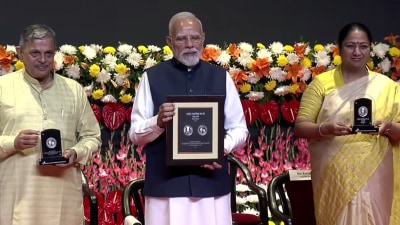 A new industrial policy with specific focus on technology and the MSMEs sector is also learnt to be in the works.
A new industrial policy with specific focus on technology and the MSMEs sector is also learnt to be in the works.
A spending plan that focuses on finding the fiscal space for capital investment of around Rs 25 lakh crore annually in the infrastructure sector — including a national gas grid project, doubling the number of regional airports and an amenities scheme alongside national highways — is learnt to be under discussion with the Finance Ministry beginning work on the FY20 Budget. A new industrial policy with specific focus on technology and the MSMEs sector is also learnt to be in the works.
Friday marked the first of the Budget meetings in the Finance Ministry’s Department of Economic Affairs. With another two-month extension to task force formed to draft a new direct tax law and review the Income-tax Act till July 31, major direct tax reforms are unlikely this year, though some minor relief on the rates front, as was also indicated after the presentation of the interim Budget in February this year, is not ruled out. Budget targets for direct tax, however, may be lowered since there was a significant shortfall in the mop-up for 2018-19, officials said.

For Goods and Services Tax (GST) though, the Budget target are unlikely to be tweaked even though it is being seen as a challenging target to meet. “Any major reduction in revenue targets would imply a reduction on the expenditure side, which the new government may not be keen to do,” an official said, adding that already a lot of expenditure compression was done to narrow the fiscal deficit gap for previous fiscal. As per the interim Budget presented in February for 2019-20, direct tax revenues are estimated to grow 15 per cent to Rs 13.80 lakh crore, while indirect taxes are estimated to rise 11.8 per cent to Rs 11.66 lakh crore.
Story continues below this ad
On Monday, industry body CII also met Revenue Secretary Ajay Bhushan Pandey with its list of suggestions for the upcoming Budget, which included removal of Long Term Capital Gains tax on equities and MAT along with rationalisation of dividend distribution tax to 10 per cent.
Sorting out the mess in the financial sector is one of the key priorities, with action in this area expected to be catalysed by the submission of a report over the next fortnight by the committee under former RBI Governor Bimal Jalan mandated with reviewing the economic capital framework of the RBI. Indications are that the panel would estimate excess capital held by the RBI, which can either be transferred to the government or used for setting up of an asset reconstruction company or ARC in the public sector to clean up the bad loans of the public sector banks (PSBs). The proposals made by the panel would be adopted after it is reviewed by the RBI central board. The Finance Ministry, in its discussions with the panel, has maintained there is no legal challenge in dipping into the RBI’s past reserves built over the years.
Access to the funds is being seen as vital in the government’s renewed attempts to sort out the financial sector mess. The closing balance of NPAs of all scheduled commercial banks (SCBs), which was close to Rs 8 lakh crore in 2016-17, rose to Rs 10.4 lakh crore in 2017-18. After the IL&FS group started defaulting on its aggregate debt of over Rs 90,000 crore since last September, financial sector entities including NBFCs, mutual funds, corporate-focused lenders have faced liquidity challenges. The situation only worsened over the last month as rating agencies started downgrading debt papers issued by NBFCs, thereby weakening their ability to raise funds to do business.
The RBI is also expected to address the liquidity issue when it meets for its second bi-monthly monetary policy review on June 6. Though the RBI has not shown keenness for a special liquidity window for NBFCs, there is possibility of more liquidity boosting measures and a possible easing of the stance, the last such space to act ahead of vagaries of the monsoons and its consequent impact on inflation.

 A new industrial policy with specific focus on technology and the MSMEs sector is also learnt to be in the works.
A new industrial policy with specific focus on technology and the MSMEs sector is also learnt to be in the works.






























